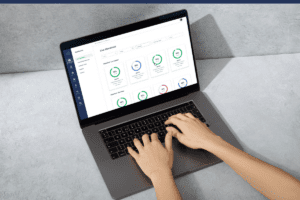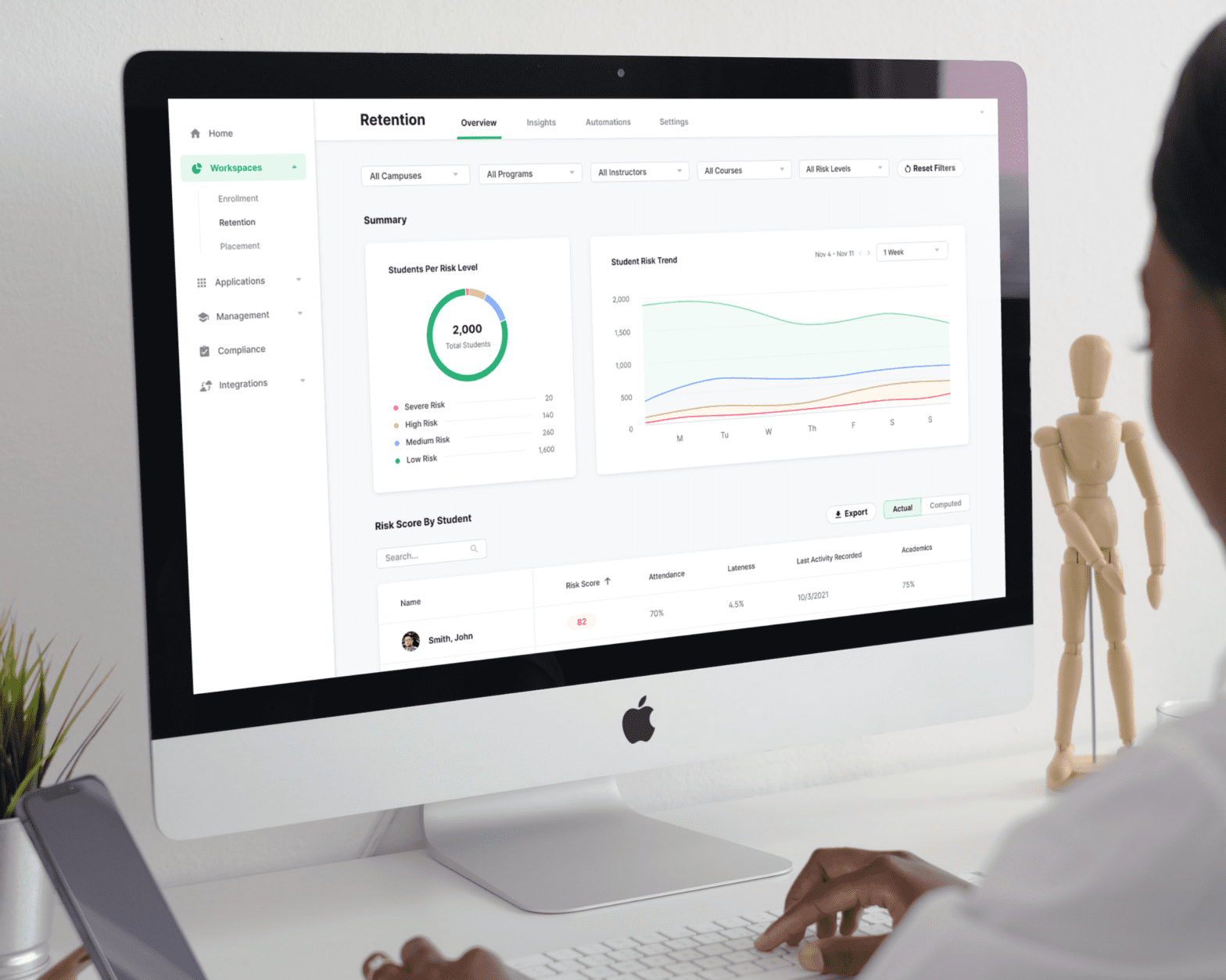[GUIDE] Improving Student Retention With Intervention Automation
Career and technical education programs can improve student retention through intervention automation.
What happens when a student at your school becomes at risk of dropping out?
Does it take several days for you to gather the data and create an intervention plan, or do you act immediately to get students back on track?
Unfortunately, many trade and technical schools have manual processes within their intervention strategy delaying intervention with at-risk students, and in short programs, students can fall behind in just a few days.
One retention solution that has gained popularity in recent years is the use of automated intervention methods, such as text messages and push notifications, to support and encourage students throughout their academic journey.
But in order to automate intervention, schools need to have the right data and systems in place. In this blog, we’ll dive into the benefits of automated intervention for improving student retention, how schools can automate intervention, and what tools schools need to automate intervention.
Read on to learn more.
Why trade and technical education programs should automate intervention to improve student retention
Research has shown that automated interventions can have a significant impact on student retention rates. One study found that “regular nudges can help college students make decisions that positively impact their college career and keep them on track for graduation.” In addition, a study conducted by the University of Hawaii found that automated text message interventions increased student retention rates by up to 10% in some courses.
The benefits of automation go beyond just increasing retention rates. They can also help students feel more connected to their institution and support systems. By providing timely and relevant information, automated interventions can help students feel supported and valued, which can improve their overall academic experience.
Though studied at traditional higher ed institutions, automated intervention methods can immensely benefit students in trade and vocational programs. Missing a day or two during a 6-month program has a significantly higher impact on a student’s progress and journey than it does for a student pursuing a four-year degree. Fast, automated interventions can engage students the moment they miss a day and ensure they don’t fall so far behind that it becomes difficult to catch up.
How to automate intervention to improve student retention in trade and technical programs
To automate student intervention, you need two key components:
- The right tools
- The right data
To get started, you must make sure your tools have the correct functionality to automate intervention. Some leading student information systems and CRMs can automate communications based on student status. CourseKey also offers this functionality based on customizable triggers—but more on this later.
But the key piece of automated intervention is timely, accurate data. Every tool you use acts on data, and they’re only as good as the data that goes into them. There’s not much benefit in having an automation tool if it’s working off of week-old data.
For many schools, getting timely, accurate data is where the challenge lies—particularly schools that have a mix of environments like online, on-ground, and externships. Oftentimes schools that have some sort of automation between the LMS and SIS still rely on some form of manual data management to ensure their SIS data is 100% accurate, unfortunately making it less timely.
The best way to ensure data accuracy is by integrating your software to eliminate manual processes. With software integration, your data is automatically transferred from one system to another and then combined to get a full picture of the student journey, including grades and attendance from every learning environment.
Integration allows your tools to work off of the latest and greatest data. Plus, when everything is in one place, you aren’t just limited to attendance data. Your tools can also scan grades and skill progression for other signs of risk. A student could be attending every day, trying their hardest to grasp a concept, but struggle with a module and become disheartened. When you implement a tool that scans grade data, you can scan for sudden changes in student grades to ensure no one falls behind without intervention.
Using automation for positive intervention to improve student retention
But it’s not just all doom and gloom. When you have timely and accurate behavioral data, you can also automate interventions and messaging to provide students with positive reinforcement and motivation.
Research has shown that positive automated messages can be highly effective in motivating students. One study found that when students received personalized text messages that provided positive feedback and encouraged them to continue working hard, they were more likely to persist in their academic pursuits. In another study, students who received positive feedback messages after taking practice quizzes showed a significant improvement in their subsequent quiz scores.
One way that positive automated messages can be used is to cheer students on when they achieve academic success. For example, sending a congratulatory text message to a student who has received a good grade on a test can help to reinforce the positive behavior and encourage them to continue working hard. In addition, positive automated messages can be used to remind students of their progress and highlight the milestones they have achieved. This can help students feel a sense of accomplishment and motivate them to continue making progress.
By providing encouragement and motivation, these messages can help students feel more confident in their abilities and more invested in their education. This can lead to increased engagement and improved academic performance, preventing students from falling off track to begin with.
Automating intervention with CourseKey's student retention software
CourseKey helps schools automatically intervene with at-risk students and cheer on students who are doing well.
First, we collect real-time data from every learning environment—online, onground, and externships—and your different systems. We combine it into one student record and scan it for different risk thresholds that can be customized based on your school’s programs and policies. If a student is at risk, it automatically notifies both the student and staff members.
Because our software works in near real-time, we notify staff the moment students hit a certain risk threshold, not several days later when they’re at even greater risk. For example, if you offer online learning, staff members are often left waiting for instructors to update LDA before intervening with a student. Because CourseKey pulls that information directly from the LMS, staff has confidence that the data is timely and accurate, so they can intervene the moment they get notified that a student is at risk.
Because CourseKey’s notification system is completely customizable and not simply based on student status, schools can also use it for positive reinforcement. For example, you can set up a notification that cheers students on for a week or perfect attendance or a good grade on a test. By encouraging students when they’re doing well, you’re making them feel cared about and decreasing the likelihood that they may become at-risk later in their journey.
Ultimately, there’s no one-size-fits-all solution to student retention. Some students may have a family issue that prevents them from persisting with their education, while others may simply be struggling with a concept. But schools can’t intervene with that student if they don’t know they’re at risk. Automating intervention ensures staff knows that a student is at risk the moment they hit a certain threshold. They spend less time managing data or looking for risk, and more time working one-on-one with students to help them stay on track.
Request a demo to learn more about automating intervention to improve retention at your school.
Recent Articles

















